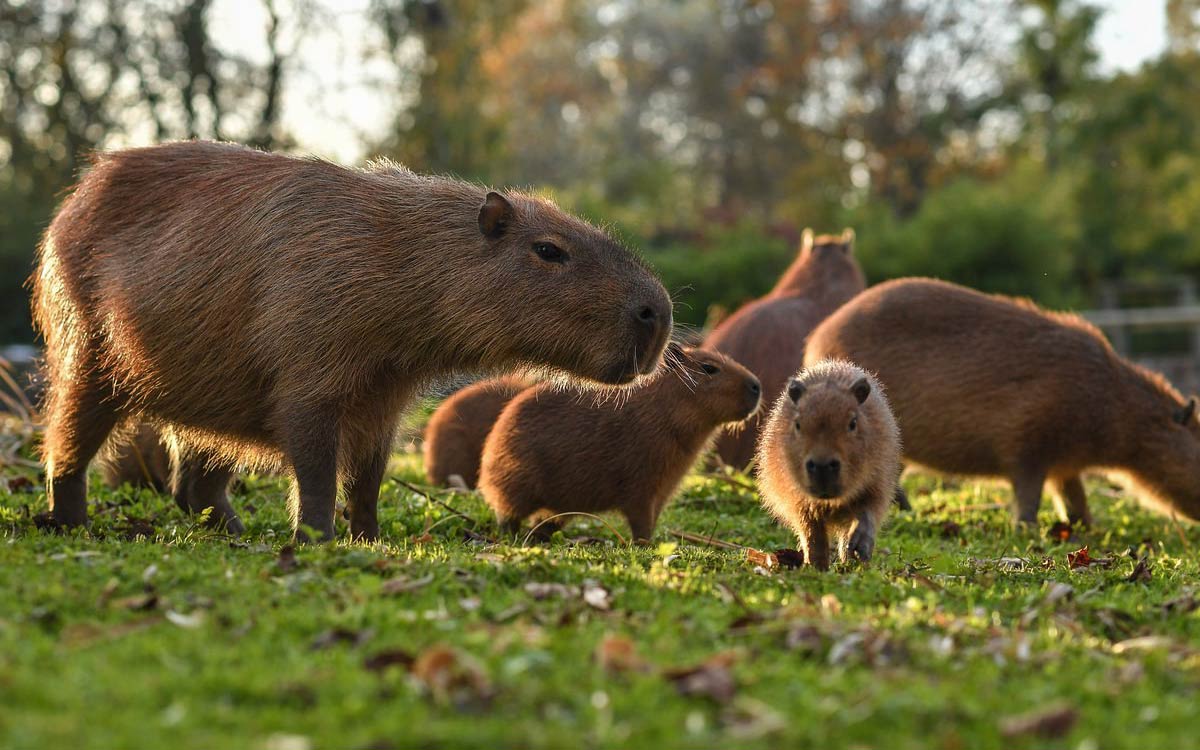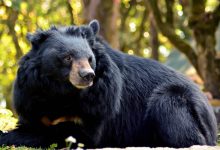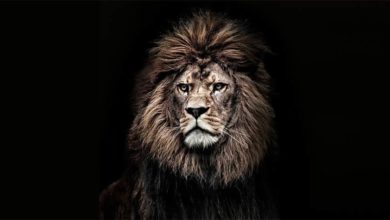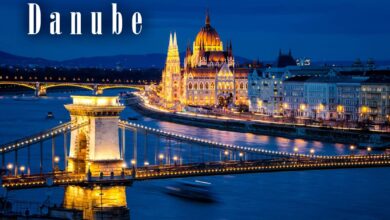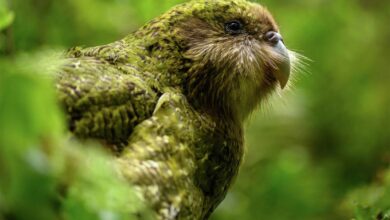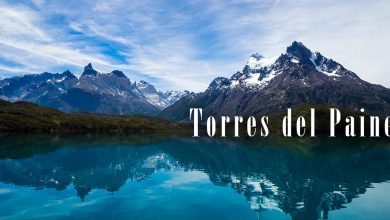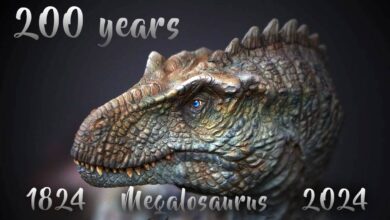Capybara, greater capybara (Hydrochoerus hydrochaeris)
Nestled in the lush landscapes of South America, an extraordinary creature captures the imagination of nature enthusiasts and casual observers alike. Meet the capybara, the world’s largest rodent and a marvel of evolutionary adaptation. With its barrel-shaped body, webbed feet, and an uncanny ability to charm humans, the capybara stands out as one of the animal kingdom’s most intriguing members.
Often described as a “giant guinea pig,” capybaras have recently surged in popularity on social media, becoming the subject of countless memes and viral videos. However, beyond their internet fame lies a species with remarkable characteristics and a crucial role in their native ecosystems. From their semi-aquatic lifestyle to their complex social structures, capybaras offer a fascinating glimpse into the diversity of life on our planet.
Join us as we dive into the world of capybaras, exploring their unique features, habitat, behavior, and the challenges they face in an ever-changing environment. Whether you’re a wildlife enthusiast or simply curious about these charismatic creatures, prepare to be captivated by the surprising and delightful world of the capybara.
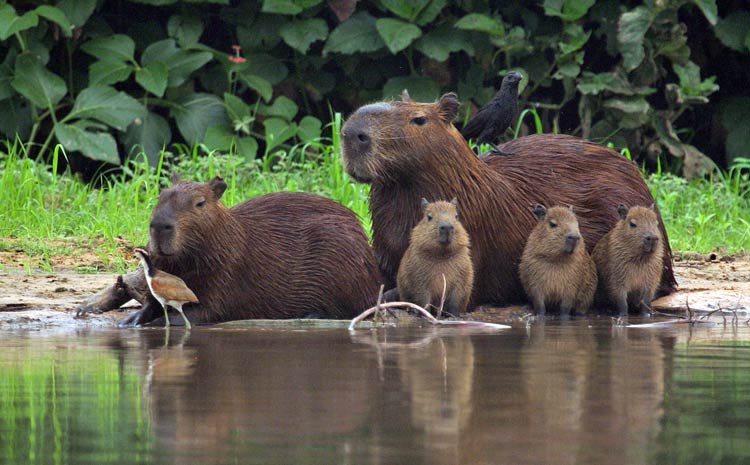
Capybaras are funny and cute animals. On 10 July, we celebrate Capybara Appreciation Day, so let’s learn more about these animals. We have prepared some interesting facts about the capybara and its lifestyle.
Scientific Classification
- Common Name: Capybara
- Kingdom: Animals
- Type: Chordates
- Class: Mammalia
- Order: Rodentia
- Family: Caviidae
- Generic Species: Hydrochaeris hydrochaeris
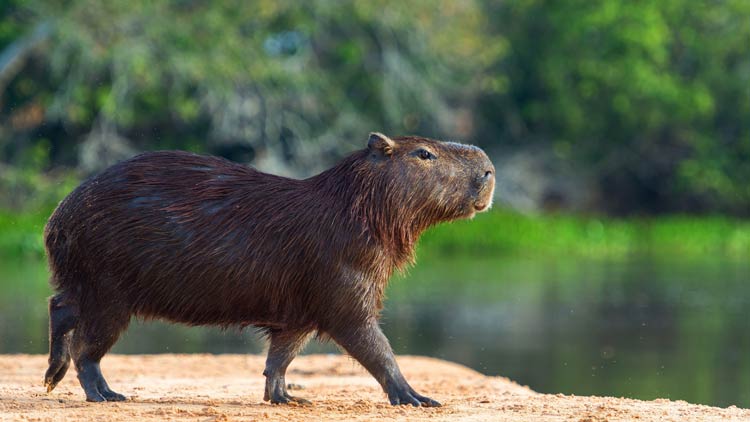
Characteristics
The capybara has long, coarse, and somewhat sparse fur. The back is reddish-brown or grey, while the underside is lighter yellow-brown. Adult males have a large, bare hump on their muzzle containing large sebaceous glands. They have short limbs and a large, broad head with a pronounced muzzle. Their toes have short, strong claws and are partially webbed. They have a rudimentary tail that is not visible. Weight ranges from 27 to 79 kg.
Habitat
They live near water, including in swamps, estuaries, and along rivers and streams. Capybaras are found east of the Andes in Colombia, Venezuela, Ecuador, Peru, the Guianas, Brazil, eastern Bolivia, Paraguay, Uruguay, and northwest and east Argentina.
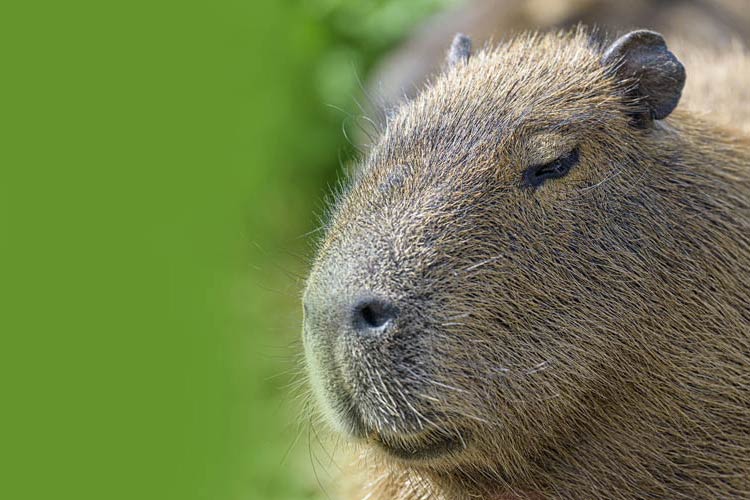
Interesting Facts About Capybaras
Largest Rodent in the World
The capybara is the largest rodent in the world. Adult capybaras can grow from 1.0 to 1.3 metres and weigh up to 79 kilograms.
Close Relatives
The capybara belongs to the rodent family Caviidae. Close relatives include Guinea pigs and the genera Dasyprocta and Cuniculus, which include agouti and paca. All of these animals belong to the order Rodentia, the most numerous mammalian order in the world, representing about 40% of all mammalian species.
Semi-Aquatic Lifestyle
Capybaras lead a semi-aquatic lifestyle and are excellent swimmers, with webbed feet for better movement. They can even sleep in the water, sticking their noses out to breathe. They often swim with only their nostrils, eyes, and ears above the water and can swim long distances underwater.
Social Structure
They live in large families, usually led by one dominant male who reproduces. Their mating system is resource-defensive polygyny, where males defend access to food resources near water. Capybaras are extremely sociable creatures and live in groups of up to 100 individuals. The social structure is dominated by a dominant male, with females and young males making up the rest of the group.
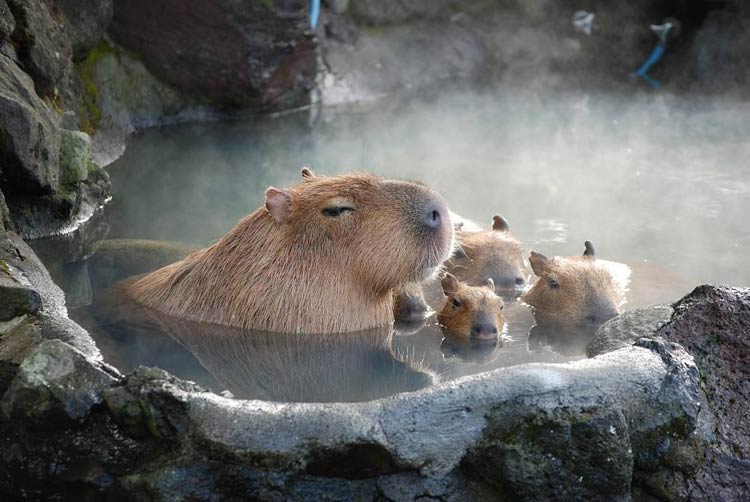
Herbivorous Diet
Capybaras are herbivores with a diverse diet, feeding on a variety of grasses and aquatic plants, as well as fruits and tree bark. Their diet is predominantly grasses, but they also eat aquatic vegetation, cereals, melons, and squash.
Constantly Growing Teeth
Like other rodents, capybaras’ teeth never stop growing. They are constantly gnawing on food to keep their teeth at an acceptable length.
Interaction with Other Animals
Capybaras get along well with a wide range of animals. It is not uncommon to see birds, rabbits, and even monkeys using capybaras as a comfortable place to rest.
Communication
Capybaras have a rich communication repertoire that includes scent marks, vocalizations, and physical contact. They even purr when they are satisfied.
Natural Sunscreen
Capybaras like to lie in mud, which serves as a natural sunscreen and can help keep pests such as ticks and flies at bay.
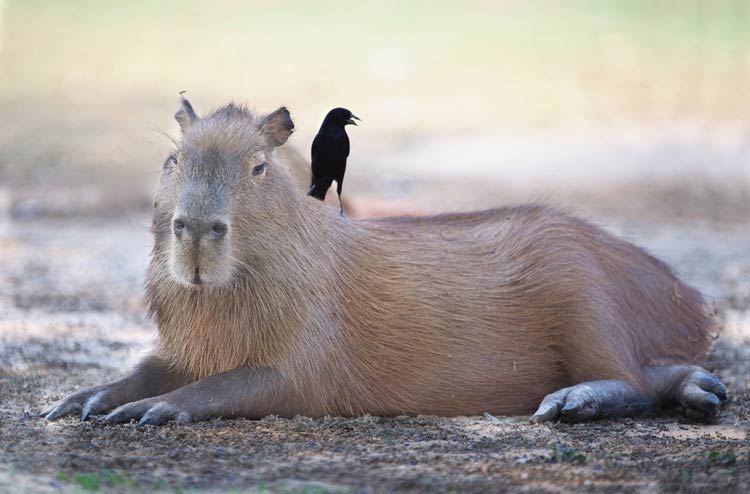
Reproduction
Pregnancy lasts up to 120 days, resulting in an average of 4-5 cubs. The birth rate peaks in February, and they reach sexual maturity at 15 months.
Predators
Despite their large size, capybaras have a number of natural predators, including jaguars, anacondas, caimans, eagles, and humans.
Friendly Nature
Capybaras are known for being one of the friendliest animals. They are very social, loving to cuddle, play, socialize, and groom each other. They are even known to hitchhike on alligators.
Environment and Conservation
Although capybaras are often hunted for their meat and skins, they remain widespread and common. There is a small interest in breeding capybaras on commercial ranches, which helps to maintain habitats while allowing for commercial activities. The capybara is found in many protected areas throughout its range.
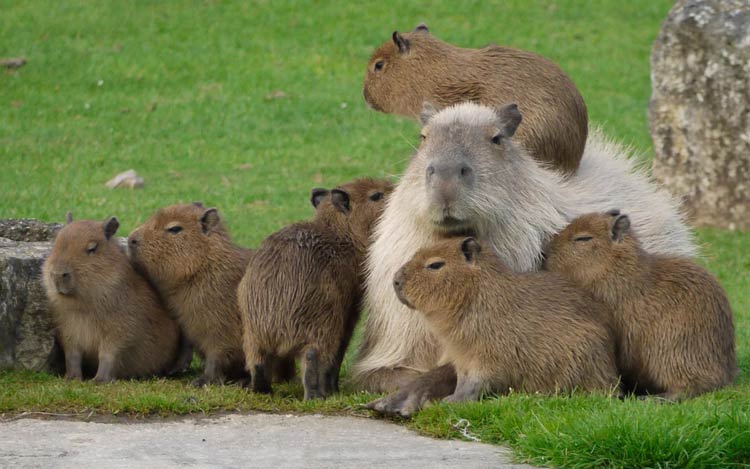
Can a Capybara Be a Pet?
Although capybaras may be kept as pets in some jurisdictions, they are large, active animals that require a lot of space and often access to water for bathing. They are social creatures and do better when they live in groups, which can also be a challenge in the home. Additionally, they are rodents, which means their teeth are constantly growing, and they need something to chew on to slow this growth.
Capybaras require special care and needs that can be challenging for many pet owners. For these reasons, they are better suited to living in a natural environment or in zoos, where their needs can be fully met. It is important to note that in some countries and regions, keeping capybaras as pets may be illegal or require special permission.
According to Yahoo Finance, the initial cost of buying a capybara on the exotic pet market is about $1,000 per animal, although some estimates put the cost as high as $8,000. Veterinary costs can range from $600 to $1,000 per year. Owners should also consider daily food costs. As social animals, capybaras do best in company, so potential owners should be prepared to have more than one animal.
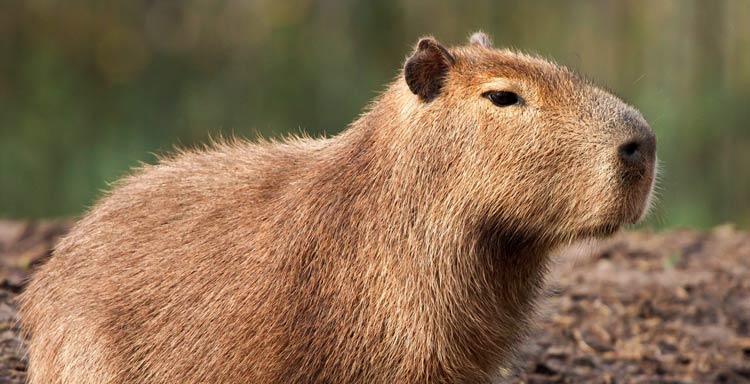
Can a Capybara Attack a Person?
Capybaras are known for their friendly and peaceful nature, and they do not usually attack humans. They are very social animals and can get along well with a variety of species, including humans. However, as with any wild animal, the possibility of aggression can increase if the animal is frightened or provoked. Also, if a mother capybara believes that her cubs are in danger, she may become defensive. For this reason, despite how friendly they may appear, it is still advisable to keep your distance and handle them with respect to ensure the safety and well-being of all parties.
Where Can I See Capybaras in the Wild?
Capybaras, the largest rodents in the world, can be found east of the Andes and along riverbanks in Central and South America, from Panama to Argentina. Semi-aquatic, like beavers and hippos, capybaras typically live near ponds, swamps, marshes, or any standing water. They are often called “water pigs” or “capybaras” because they can stay underwater for more than five minutes to escape predators such as anacondas and jaguars.
As their natural habitat is shrinking, capybaras are encroaching on human territories. Since 2020, hundreds of them have taken over Nordelta, a private gated community outside Buenos Aires. The isolation caused by the COVID-19 pandemic has allowed these furry capybaras to spread into the area’s luxurious parks.
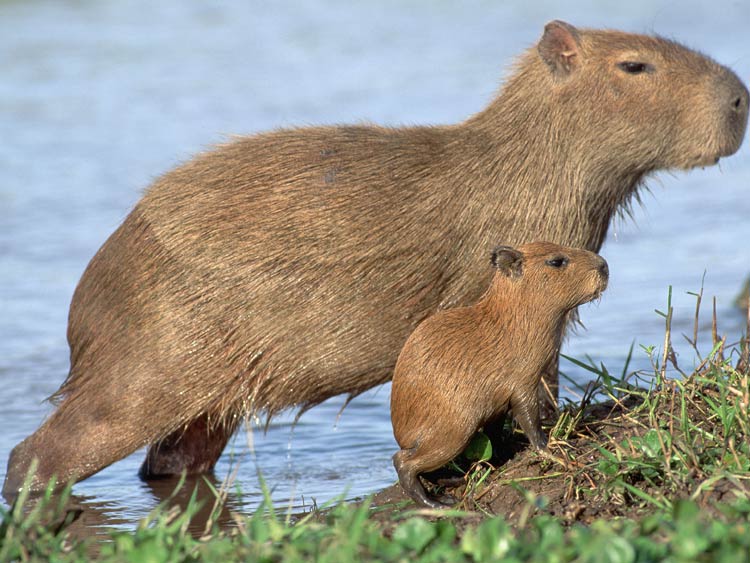
Do Capybaras Really Eat Their Own Faeces?
Yes, they do. According to the San Diego Zoo, capybaras consume their faeces to obtain beneficial bacteria that help break down the thick fibre in their diet, which includes reeds and grains.
Conclusion
The capybara is a modern-day hero of internet memes and funny videos. Interesting facts about the capybara make this animal even more fascinating. A very cute appearance, friendly nature, and sociality are all you need to know about the capybara.

